The day I discovered the gastronomic genius of Senigallia on Italy’s Adriatic Coast.
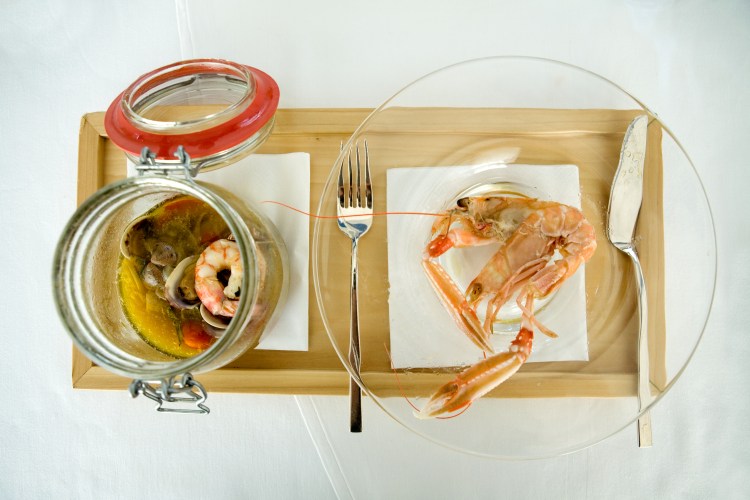
It was cold and rainy on Italy’s east coast. The wind whistled up the Adriatic Sea in a determined and surly manner. This part of the Adriatic Coast, Le Marche, can be bleak in the winter. I was in the seaside town of Senigallia to explore the town and visit an unlikely culinary hub. The town lies at the mouth of the Misa River where it flows into the sea. We are about twenty miles north of Ancona. The alluvial flood plain provides fertile agricultural land. The Adriatic Sea offers an abundance of fish. The river estuary offers shelter for fishermen and a place to land the catch.
Rather embarrassingly I had a Welcome Committee huddled together to meet me on the seafront; Lara, Claudio and Marcello. Lara is responsible for tourism, she is elegant, charming, effusive. She grew up in Ostra Vetere, twenty minutes from here. She studied in Milan but came back home as soon as she graduated. Claudio is the mayor, intense, philosophical and reticent. Born and bred Marcigiano – as they say – a local boy. Marcello is the archaeologist and tour guide. He is from Roncatelli, ten minutes away, and still lives there with his parents. It’s like that in Italy. The people are loyal to their land, their history, their heritage. We make our way into the centre of the ‘Old Town’.
Marcello explains that this region has been inhabited for more than 3000 years. First by the ‘Piceni’ a local tribal group and then from about 300 BC by the Romans. Initially it was a garrison, later a market town and trading centre. Senigallia was important strategically to the Romans, Via Flaminia, a major road linked Ancona in the south with Rimini to the north. The central point of the town in Roman times was the place where the Cardo Maximus was bisected by the Decumanus Maximus – this point is found on Via Giugno II and Via Arsilli. It is still one of the key cross roads in the town. Just to the north was the Roman Forum, now it is Piazza Roma. As recently as 1989 further Roman ruins were discovered when the Teatro La Fenice was being renovated. Marcello points out an old Roman road, rutted with the wheels of numerous chariots. There are foundations of several taverns and a grand merchant’s home complete with atrium and impluvium. He is animated and intense. He claims this find is the most important recent Roman discovery in the whole of Northern Italy. Close to the town there is an extensive Roman excavation that Marcello has worked on for several years. It is a wealthy nobleman’s house with reception rooms, mosaic floors and private bath house. One of the mosaics depicts dolphins and fish – possibly inspired by the bountiful Adriatic. The extent of the remains indicates the importance of Senigallia in Roman times. It is Marcello’s dream to unearth evidence for Roman fish-farming in the area.
We explore ‘La Rocca Roveresca’ the medieval castle of which the locals are exceptionally proud, with it’s moat, dungeons, and rounded towers. Nearby a medieval market ‘Fiera della Maddalena’ used to take place annually. It attracted visitors from miles around. There’s a circular area of arcades known as the Foro Annunziato, built in the neo-classical style in the 19th century, where a fish market and a fruit and vegetable market take place daily. Then in the evenings the same ‘square’ metamorphoses into a neighbourhood of cute bars and cafes. We marched through the narrow, cobbled streets of the historic town centre and admired attractive old palaces. There’s even a rather strange little palace which is now a museum to Pope Pius IX. The pope was born here in Senigallia in 1846, part of the wealthy Mastai Ferretti family. You can even visit the room in which the great man was born.
The eight miles of ‘velvet beach’ mentioned in every tourist brochure is difficult to appreciate on account of the wind, which has strengthened to a respectable gale. The waves crash on to the beach and whip the sand into small eddies of dust. Senigallia has an art deco pier ‘La Rotonda’ which is impressive, stretching out to sea like a 1930s liner about to set sail for Dubrovnik or Venice. Each summer La Rotonda hosts a ‘street food’ festival. The local chefs all participate – at least two of them have Michelin stars.
After about four hours of ‘touring’ the highlights of the town I was feeling tired. I was all set to hop into my hire car and head for the hills – my destination that evening was Assisi. I was looking forward to seeing the Giotto frescoes in the lower part of the basilica. It’s quite a drive from the Adriatic up to Assisi, at least three hours and I was keen to get going.
But my hosts were insistent, before leaving we must have lunch together and they had the perfect little place in mind. That place was a ‘New England style’ building located literally on the beach. As the French would say ‘pieds dans l’eau’. As we slammed the door behind us, and the howling wind was now at a comfortable distance I looked around at the décor of the restaurant. It was quite charming. Smart tables with brilliantly white table cloths, Philippe Starck chairs. Book cases and cook books lined the back of the room and to my right was an expansive terrace looking out onto the beach and the stormy sea beyond. The port is next door, I could just make out the fishing nets hanging in the distance. The restaurant is called ‘Uliassi’ and the chef Mauro and his sister Catia run the restaurant together – he is in the kitchen and she is ‘front of house’. Born and brought up just a mile or two from Senigallia, they are Marchigiani through and through.
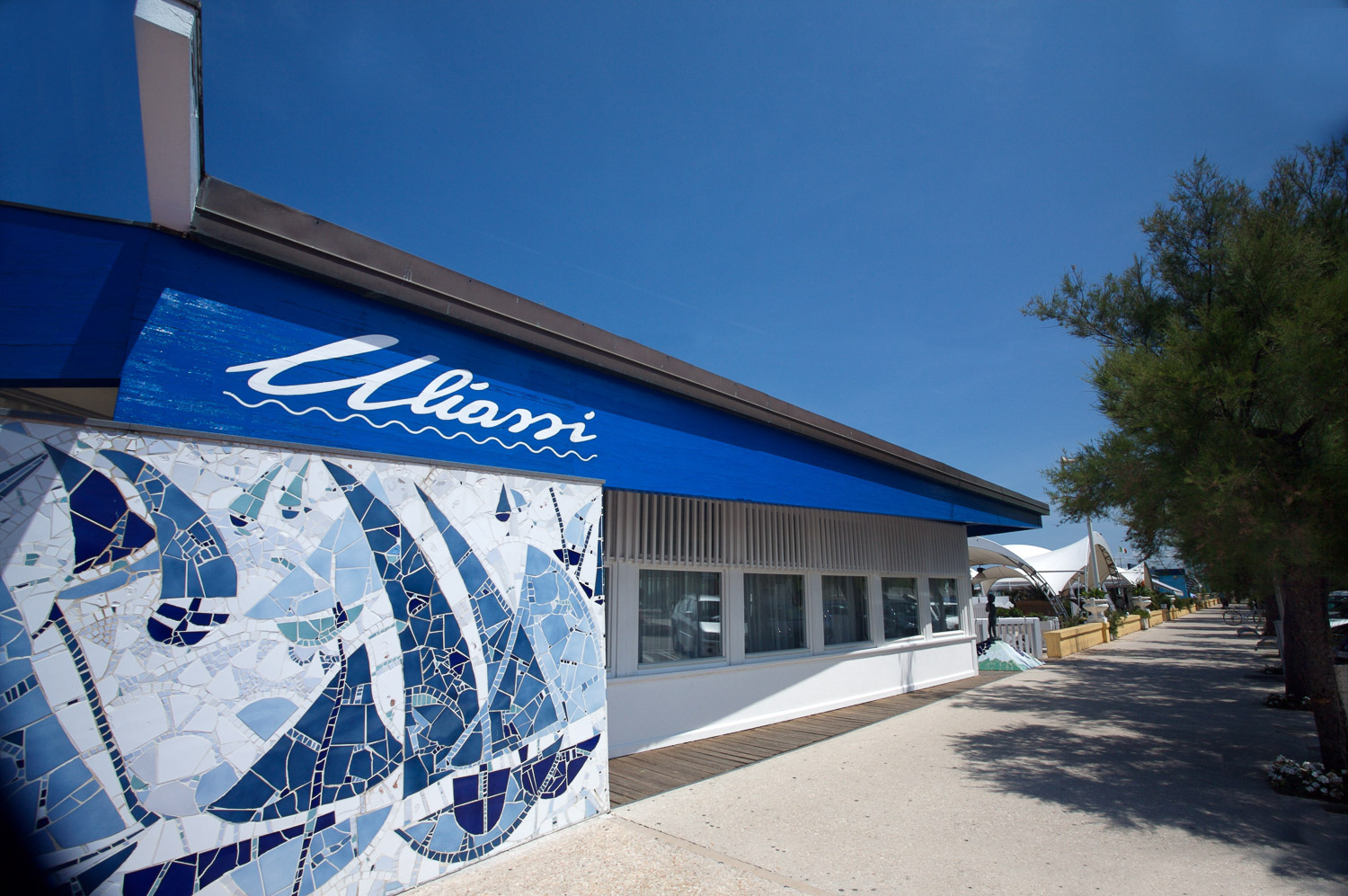
Our waiter was what my children call, ‘proper old school’ tall, slim, exceptionally smartly dressed in freshly pressed black trousers and waistcoat and perfectly laundered white shirt and black bow tie. I felt positively scruffy in comparison and scooted to the ladies in an attempt to smarten myself up. ‘I may be gone some time’ I wittily advised my Italian lunch companions, they gazed back at me uncomprehendingly. When I returned to the table there was mineral water, sparkling and still and delicious home – baked crisp breads. Our waiter brought a fabulous bottle of ‘Charmat’ sparkling white wine produced at the local Santa Barbara vineyard as an aperitivo. It was delicious, crispy and dry – a wonderful start to the meal. In fact the ‘Charmat’ was so fabulous that I ended up importing some into the UK when I got home (it arrived on a palate straight from Tilbury – but that’s another story).
Claudio, the mayor is well-known in town, we are given a great table by the window. He acknowledges this kindness with an imperious wave of the hand. In true Italian fashion there is a menu, but nobody looks at it. Instead the waiter explains what is really good today and we follow his advice. We started our lunch with mazzancolle, a flat-backed prawn unique to the Adriatic, fished from the sea that very morning. It is served marinated in lemon or simply peeled and completely raw. You can only get away with this when seafood is completely fresh. The dish was exquisite, simple, clean, delicious.
Next came a wonderful dish of water melon, honeydew melon and white fish. The melon was actually pureed melon that had been frozen and shaped into tiny globes, the sensation of the textures was divine. Once again the fish was fresh, as the Italians say ‘freschissimo’. There was a light couscous base that provided a gritty texture to the dish, one of the young chefs later explained it as ‘the sensation of sand between your toes when you go to the beach as a child’. As he described this sensation his eyes became moist with nostalgia and emotion.
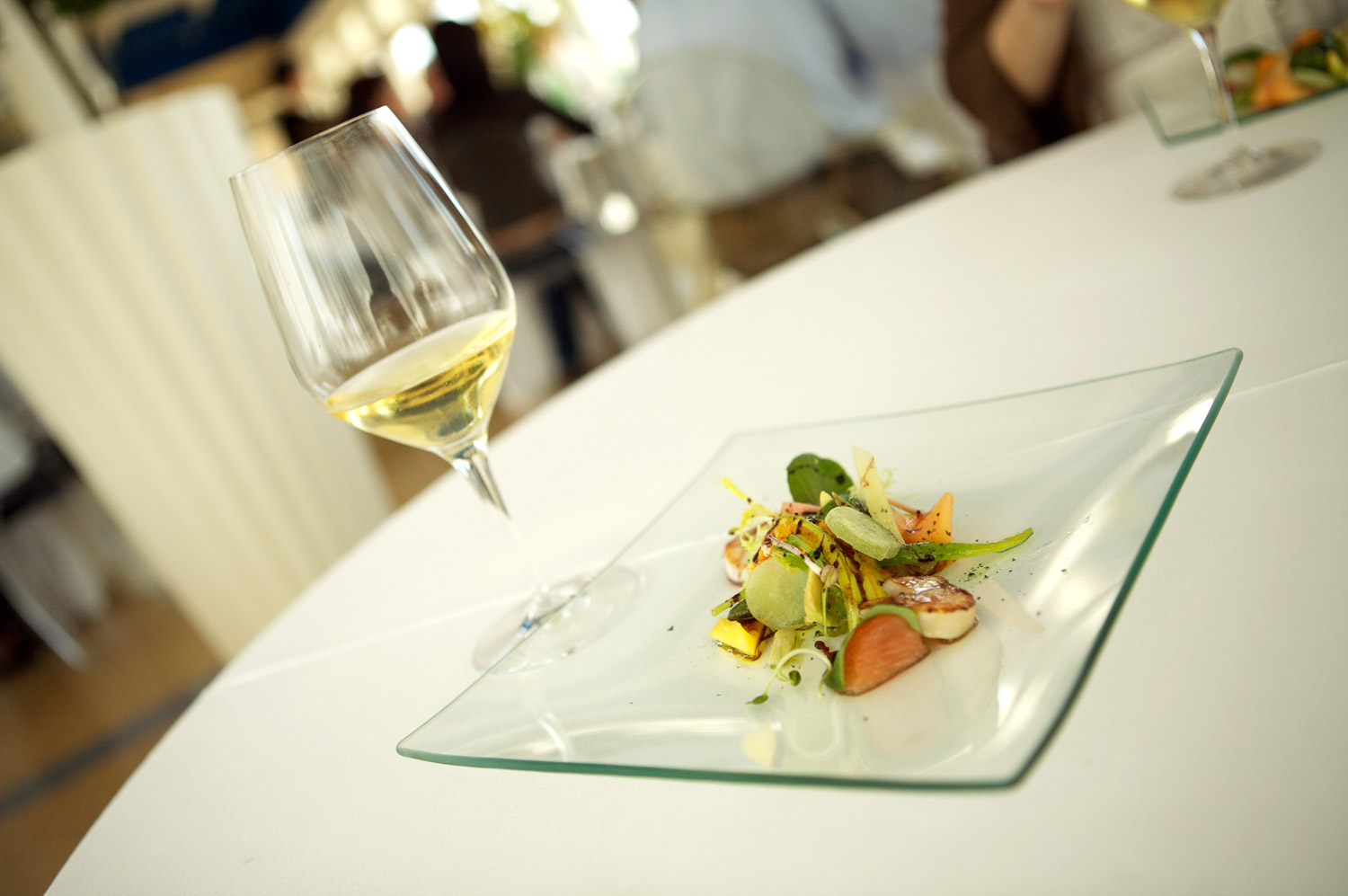

Our waiter served a delicious Verdicchio white wine with the fish. Many Brits are sniffy about Verdicchio, they remember the days when it was a cheap import. This particular wine has been produced in a small village called Barbara. Here late-picking of the grapes and fermentation in both oak and stainless steel, followed by eight months of ageing in both steel and oak produces a golden-coloured, rounded white wine. It compares (in my opinion) with a fine white Burgundy. It is from the same vineyard as the ‘Charmat’. The owner started life in Milan working in an advertising agency but when his father retired he came back home and over the last ten years he has worked tirelessly to improve the quality of the wines produced. Blending, mixing, ageing, patience. It has worked!
As the ’tagliatella di seppia, pesto di alga nori e quinoa fritta’ arrives I suddenly reflect on my situation. Here on a stormy Le Marche day, miles from home. Seated in an exceptional restaurant enjoying perfectly presented dishes. A symphony of balance, colour and texture on the plate. I am so fortunate, so lucky to be sharing this wonderful experience. For some reason, guilt probably, I was brought up Catholic, I start thinking of the Centurions in the days of the Roman Empire. I visualise their discomfort, even horror, on being informed that their legion has just been given orders to depart for Britannia. Their task to patrol or worse to construct Hadrian’s Wall. Imagine their emotions as they embarked on their journey north, by sea, on foot, taking weeks no doubt. I visualise their leather sandals and leather tunics. Hopelessly under-equipped for the climate of Northern England.
Meanwhile at Uliassi in Senigallia a kilner jar has arrived in front of each person. With a theatrical twirl the jars are opened at the table and we are invited to inhale the aromas that emerge from each glass vessel. Within there is a lightly steamed mixture of cray-fish, clams and mazzancolle. Once again the flavours are pure, perfect, clear. The chef here specialises in ‘cucina di mare’ it’s all about lightness of touch. Working with fresh, local ingredients to create the perfect balance of harmony and flavour. The focus is on simplicity and consistency in an Italian kitchen. Well that and passion.
There’s a school here in town for chefs, The Instituto Panzini. It is one of the most famous Culinary and Hospitality Schools in Italy. Vittorio one of the ‘professore’ has been teaching there for decades. He’s popped in to join us for coffee. Vittorio is great fun. He taught Mauro Uliassi and he taught Moreno Cedroni, Senigallia’s other star chef. Vittorio is so warm and friendly. The atmosphere is relaxed. Mauro, the chef, emerges from the kitchen and greets us all. He invites me to visit the kitchen where I’m amazed to see a kitchen brigade some twenty strong, including at least one cousin, a nephew, a son and an aunt. It’s like that in Italy. Keep it in the family. Local chefs – locally trained. The kitchen brigade are welcoming and friendly too.
Moreno Cedroni – Senigallia’s other world class chef has his own restaurant just down the road ‘La Madonnina del Pescatore’ he trained at Panzini too. He knows Uliassi well and they work together to promote the town and it’s gastronomic traditions. Vittorio informed me that Cedroni would have popped in but he’s just landed a contract to oversee the gastronomy at a luxury hotel in Mauritius and isn’t in town.
Lara suggests some cheeses with a glass of Lacrima di Morro Alba. This is a local grape, she explains from the province of Ancona. The grape ‘Lacrima’ produces a delicious red wine, full bodied, intense, ruby-coloured. Lacrima grows on the sunny slopes around Ancona and the hillsides adjoining Senigallia. The word ‘lacrime’ in Italian means ‘tears’ straight from the Latin. The wine was first mentioned in 1167 by Federico Barbarossa. It was awarded the quality DOC status in 1985. The wine is made up of two grape types 85% Lacrima and 15% either Montepulciano (originally Tuscan) or Verdicchio (local). Lacrima is unique to this part of Le Marche – it also goes brilliantly with the local dish Brodetto di Senigallia. This is a fish soup typical of the region – made of thirteen different types of fish.
Claudio suddenly starts to speak, he explains how his mother, in the 1950s, used to prepare ‘brodetto’ on a Friday. She would walk to the small port early in the morning and wait for the fishermen to return. She would then select a large bowl of mixed fish, no money changed hands. She had a vegetable garden and would offer the fishermen tomatoes, onions, carrots and celery in return. The ‘brodetto’ would be prepared in the morning, the fish cleaned and chopped into small pieces, sauted in garlic, onion and herbs. The fish would then be left to cook very gently for hours in a sauce of tomatoes, white wine, parsley and white onion. It was served with bread or salad leaves depending on the season. In winter smoked fish could be used. The ‘brodetto’ was a delicious and economical dish for the large Italian families of the time.
The whole experience is humbling. I came into this restaurant not even wanting to stay in this little town. Three hours later I emerge having sampled one of the finest culinary experiences of my life.
A year later I invited Mauro and his team to come to Chester (my home town) as a guest chef. Chester and Senigallia are ‘twin towns’. He came over and cooked a ‘presentation lunch and dinner’ at the Chester Grosvenor. Afterwards I escorted him from table to table so that the diners could meet ‘the man himself’. I acted as the translator. Most people were very complimentary. Afterwards I asked Mauro for his opinion of the event. He said to me,
‘I did the best I could with the quality of the ingredients.’
I’ll never forget those words. It’s all about the ingredients, it’s about working with what you’ve got and actually that’s a perfect metaphor for life. Work with what you have, work with what you’ve got in front of you. With consistent effort and energy you won’t be disappointed.
I never did leave for Assisi that day. I arrived in the town anxious to move on and by sunset I never wanted to leave. The combination of the hospitality of my hosts and the exceptional ‘cucina di mare’ cuisine had opened my eyes to the joys of the Adriatic Coast of Italy. I’d received an invitation to visit the Santa Barbara vineyards the next day to sample their extraordinary wines. Stefano Antonucci the owner was expecting me – Lara knows him he is a personal friend. It’s like that in Italy, friendship, passion and history run deep.
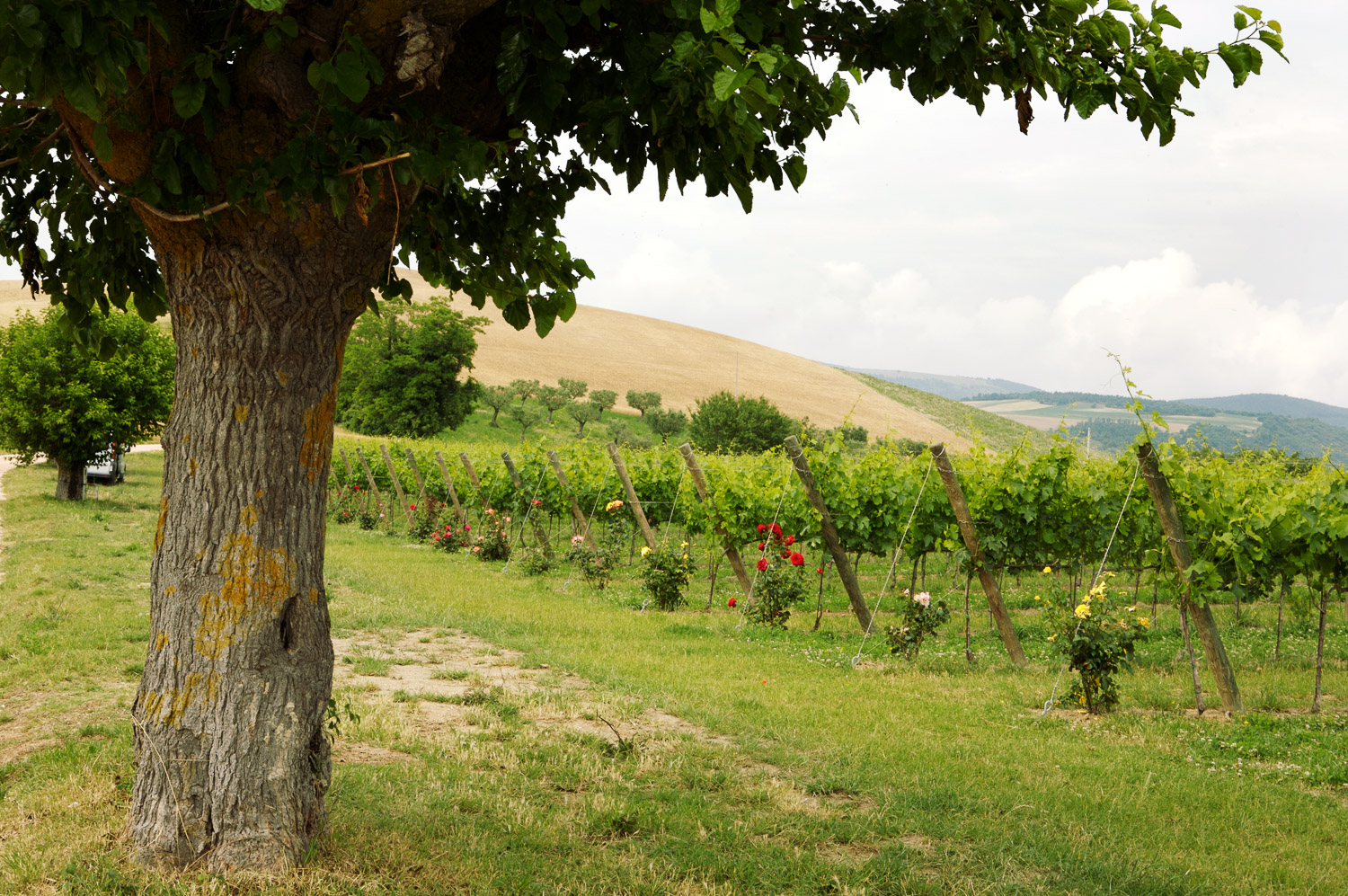
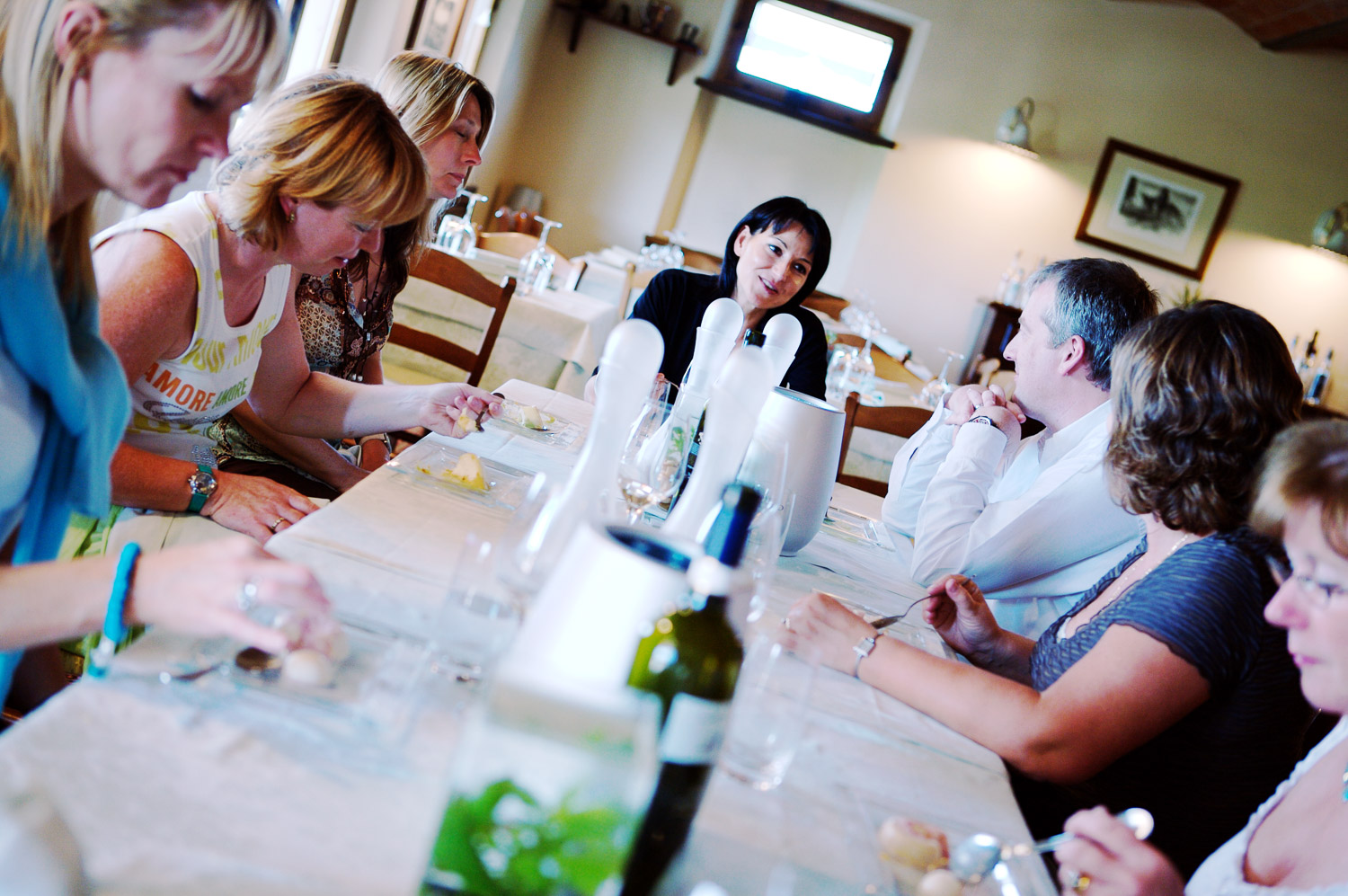
Notes:
- Tales from Italy, especially featuring food, check out other articles on my blog: www.educated-traveller.com
- Photographs by my old friend Peter Corcoran – thanks Pete!!
- Further articles on Senigallia and Gastronomy: Senigallia, Italy – Gastronomy and Wine
- Where to stay in Senigallia: Fabulous Country House to rent – Senigallia, Le Marche, Italy
- For more thoughts from Educated Traveller: A Celebration of Life
- Enjoy and Buon Appetito!!
- Uliassi Ristorante: www.uliassi.it
- Updated: June 2021
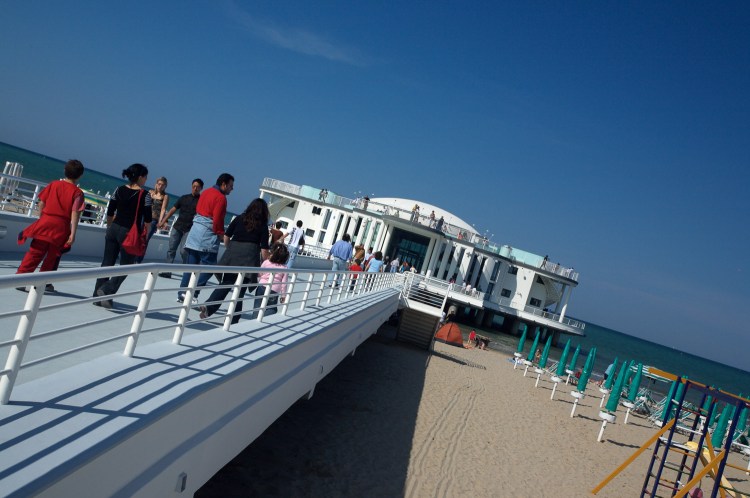

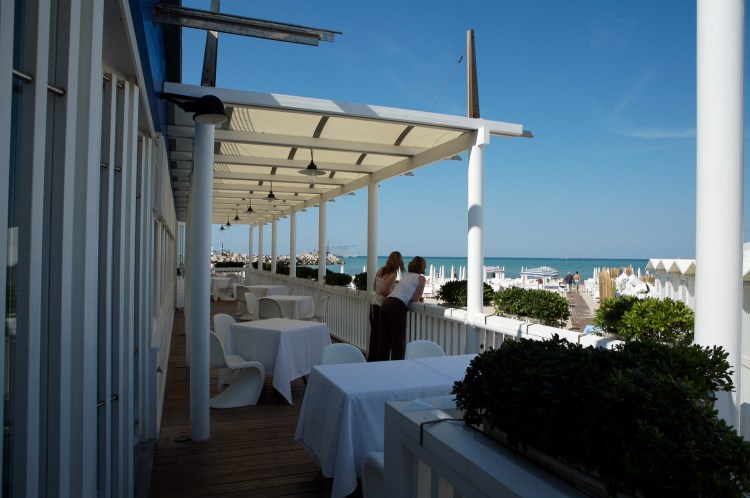
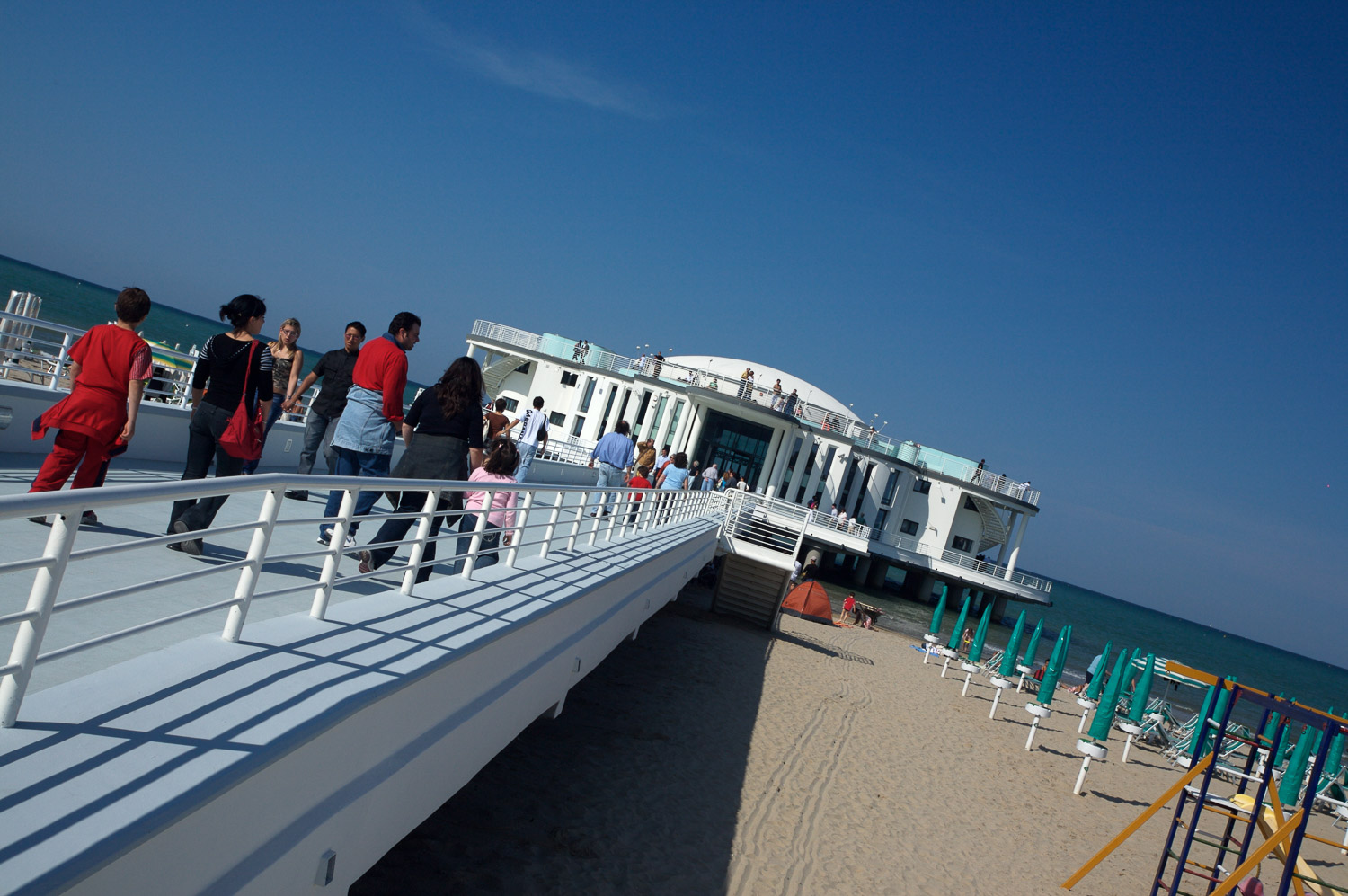
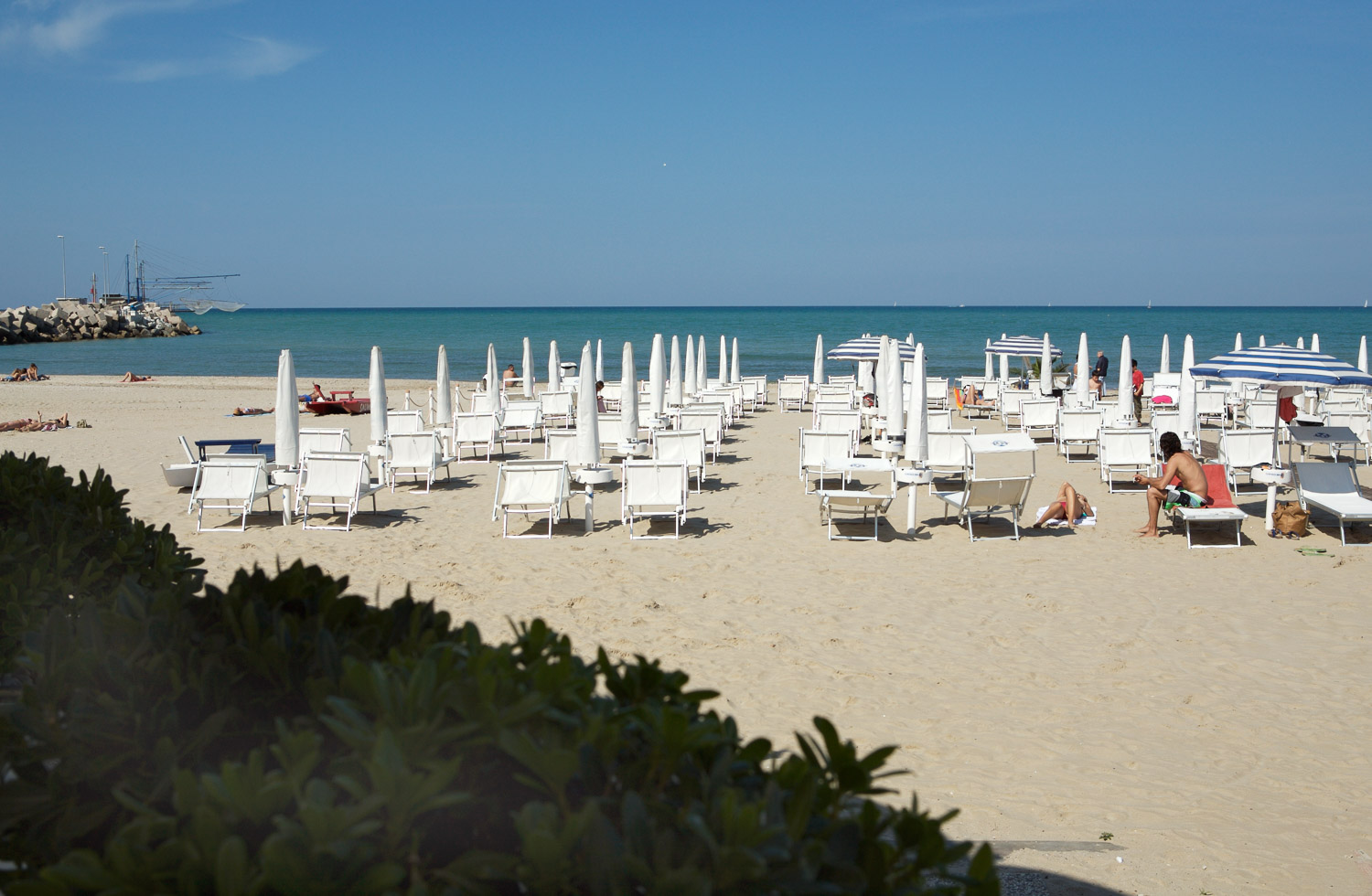

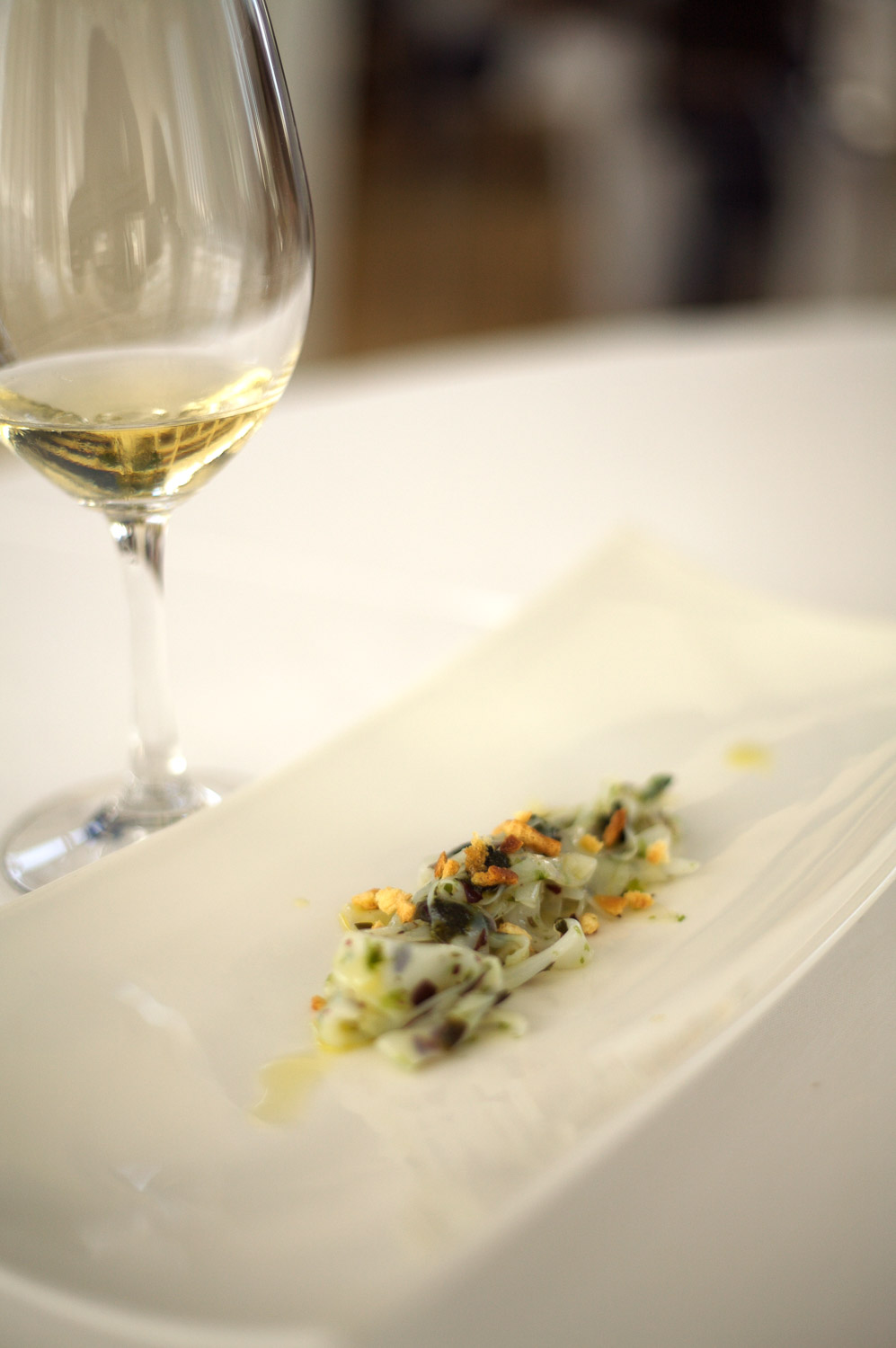
Janet, you weave words to create such sensorical delights!! This is purely joy to read. And yes, I want to visit!!
LikeLiked by 1 person
Mimi – you are a joy to have as a reader. Always positive and so engaged. Thank you.
LikeLike
I can’t wait to share a meal with you and hear you describe all that went into the making of it.
LikeLiked by 1 person
Thank you Mary Lou – we will have many memorable dining experiences together……….
LikeLike